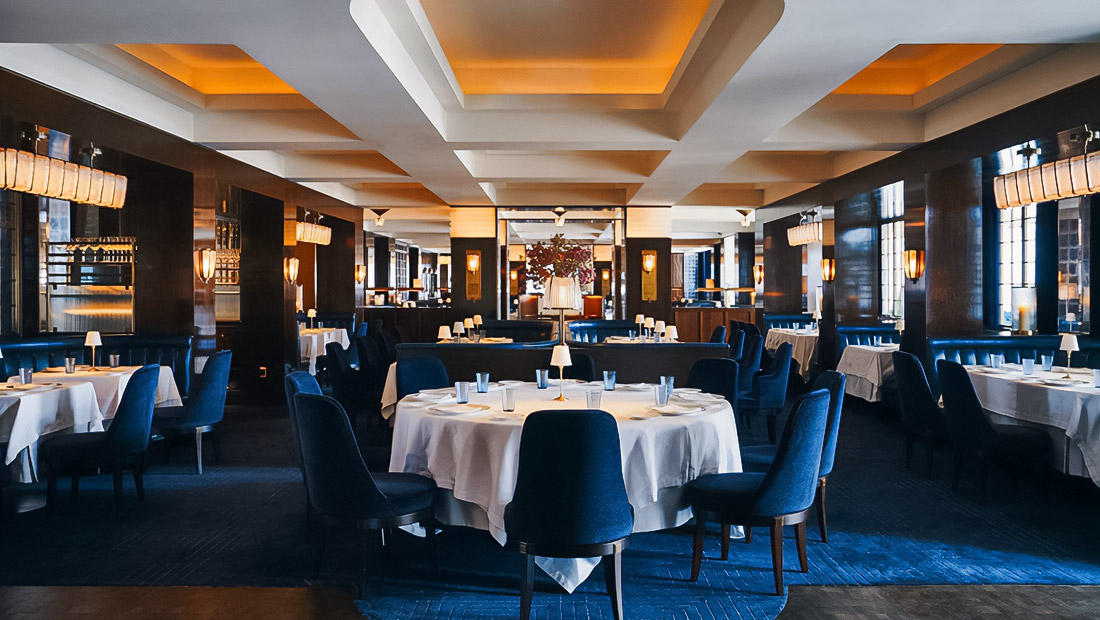In the world of restaurant services, especially in elite establishments, invisible signals often play a decisive role in forming first-class impressions of the clients. These signals — are all not related to speech: the natural language of the body, expressive mimicry, friendly gestures, and visual and acoustic elements. In restaurants of the highest league, where each detail of interaction with clients has meaning, invisible signals can become that invisible element, which will determine whether the client will return again. According to the latest research, about 70% of clients admit that nonverbal signals significantly influence their opinion about the establishment. Learn more about best restaurant with view and how nonverbal signals play a role in client experience.
Creation of Trust and Comfort: Role of Nonverbal Signals

Nonverbal signals create a natural atmosphere of human trust and comfort. They are capable of significantly improving the impression from visits and strengthening the positive perception of the brand. In conditions of high competition, where each restaurant strives to offer something unique, exactly invisible signals can become that factor, which will highlight the establishment on the background of many others. In 2023 research, it was proven that people who feel comfortable thanks to nonverbal signals 25% more often will recommend the restaurant to their acquaintances.
Detailed Overview of Nonverbal Signals in Restaurants of High Level
- Language of the body: The Open and benevolent posture of the waiter, the slight tilt of the head when listening to the client, confidence, but not hasty steps – these all demonstrate respect and attention to the guest.
- Mimicry: Constant friendly smile on the face of the staff, even in moments when they do not interact directly with clients, generates a feeling of warmth and hospitality.
- Gestures: Unnoticeable gestures, such as a light nod of the head or indication with a hand in the direction of the table, help clients feel more confident and safe.
- Visual elements: Art of interior, lighting, and even uniform of employees – these are all nonverbal signals that influence the perception of the establishment.
- Acoustic elements: Background music, noises in the kitchen, and even the sound of the steps of the waiter create an environment, forming the mood of guests.
Influence on Client Experience: Behind Scenes of Perception

I can say with confidence that nonverbal signals play a significant role in clients’ perception of restaurants and their general impression of visits. In the course of research, it was established that people are more inclined to trust and return to places where they feel comfortable on a nonverbal level. How does this work, in detail? In 2018, a study was conducted that showed that positive nonverbal signals increase the chances of repeat visits of clients by 40%. Learn more about nonverbal signals in encyclopedia Britannica.
- Emotional connection: Faster establishment of emotional connections with staff — the main advantage of the use of positive nonverbal signals is creating in clients a feeling of care and attention.
- Level of comfort: Simple gestures, such as a friendly smile or light wink, relax and give a feeling of home comfort.
- Perception of the brand: Positive nonverbal signals strengthen the perception of the brand as professional and client-oriented, which contributes to receiving positive reviews and recommendations, increasing the client base by an average of 15% annually.
Successful Cases: Real Examples of Use of Nonverbal Signals
Famous restaurants around the world successfully use nonverbal signals to improve client service. For example, in the restaurant “The French Laundry” in California, enormous attention is paid to the preparation of staff in part of nonverbal communication. Waiters master skills of anticipation of the desires of clients and learn to effectively use gestures and mimicry to create a comfortable atmosphere. This is one of few establishments where clients note the high quality of service, evaluated in 4.9 out of 5 on popular platforms.
Another example — is the restaurant “Eleven Madison Park” in New York. Here, each element, starting with the uniform of the staff and ending with music in the hall, is carefully thought out to create a special mood. Nonverbal signals here play a key role in the formation of a unique client experience, and this, besides numerous awards, is evaluated by users on level 4.8 out of 5 on popular resources. Both these examples show that competent use of nonverbal signals contributes to the success of the establishment among regular clients and new visitors.
Guide to Implementation: Practical Recommendations
For successful implementation of nonverbal signals in the practice of service in restaurants, it is important to follow a number of recommendations:
- Training of staff: Implement in programs of training skills of nonverbal communication. Staff must understand how their own gestures, mimicry, and language of body influence clients.
- Analysis and feedback: Regularly collect and analyze feedback from clients. Evaluation of nonverbal signals will allow for the identification of weak places and improve the quality of service.
- Creation of atmosphere: Pay attention to the interaction of elements of interior and choice of musical accompaniment so that all this harmoniously fits into the general style of your restaurant, supporting the necessary atmosphere.
- Individual approach: Each client is unique, and nonverbal signals must be taken into account. Staff must be able to adapt to different types of clients and their expectations.
- Quality control: Regularly conduct internal checks to ensure that staff follows established standards of nonverbal communication.
Conclusions and Main Ideas for Success of Your Establishment
In the end, we can say with confidence that the performance of nonverbal signals is a critical component in the formation of first-class client experience in restaurants of high level. They create trust and comfort, enhance the perception of the brand, and contribute to the increase in the level of satisfaction of clients. Restaurants that successfully use nonverbal signals stand out in the background of their competitors and attract more clients. Do not forget that the training of staff and regular analysis of quality of service are key factors of success. Following recommendations and paying attention to important details, you will be able to significantly improve the quality of service and create unique impressions for your clients.

Football fan, shiba-inu lover, DJ, hand letterer and identity designer. Operating at the fulcrum of modernism and elegance to craft experiences that go beyond design. Let’s chat.
